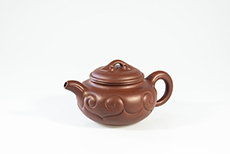.
Search results
Results 1 till 1 of a total of 1 (1 pages).
-
Tonkännchen Yixing Fangguruyi Zhongcaoqing
A small teapot for the Gong Fu Cha, coming from Yixing (Yixing Zishahu), 150ml.Fanggu stands for imitating antiquity. Ruyi means literally as desired and denotes an object bringing luck and blessing in ancient China, which goes back to the profane backscratchers. Fanggu Ruyi refers to a particular shape and pattern on the clay pot.Artist: Qi ShaThe clay used: Yuankuang Zini Zhongcaoqing Zini, purple clayThere are many different types and qualities of zini, depending on the composition, origin and depth of the ore extracted. This clay has an extremely good plasticity, stability and little shrinkage during firing. That allowed the artists of the Ming period to create many of the forms that are still common today.Due to the medium porosity of the pot, many teas have a more elegant, softer taste. It is well suited for all darker teas.This pot is made of Yuankuang Zhongcaoqing, quite a rare ore, especially if it was mined from Huangluoshan, as it is the case with this pot.
.








